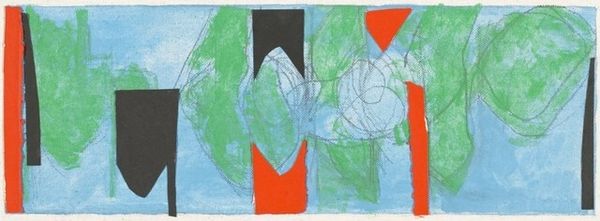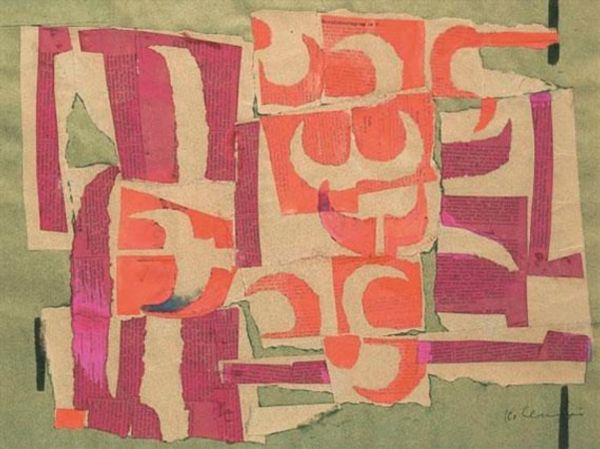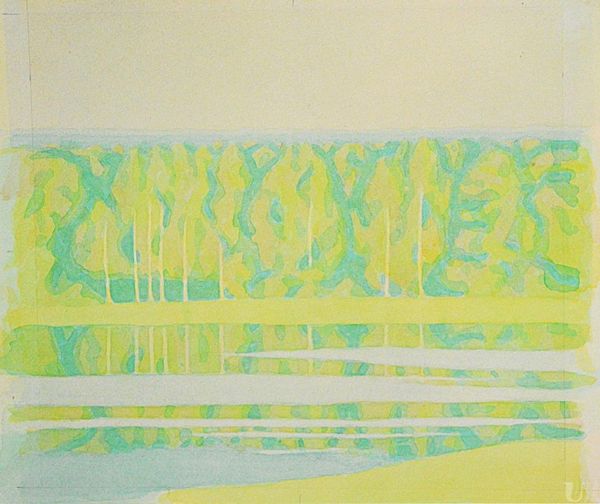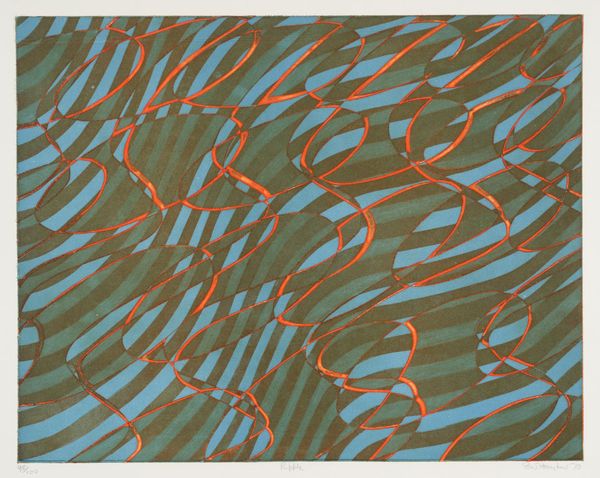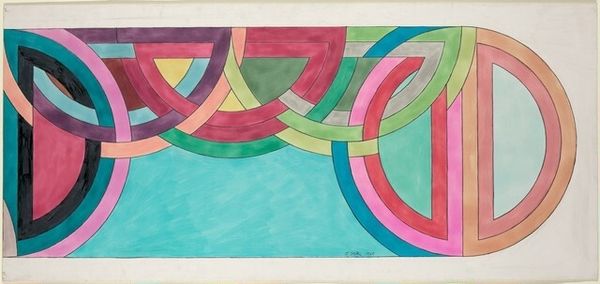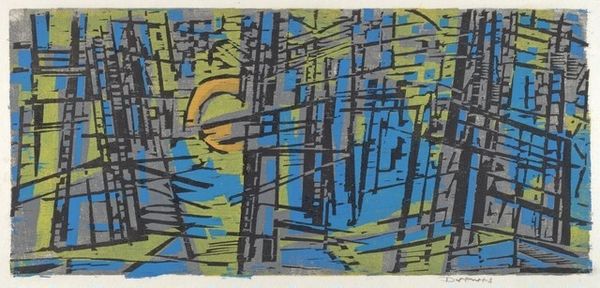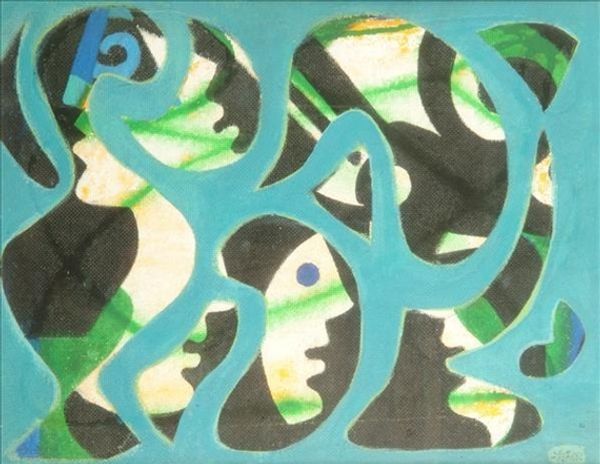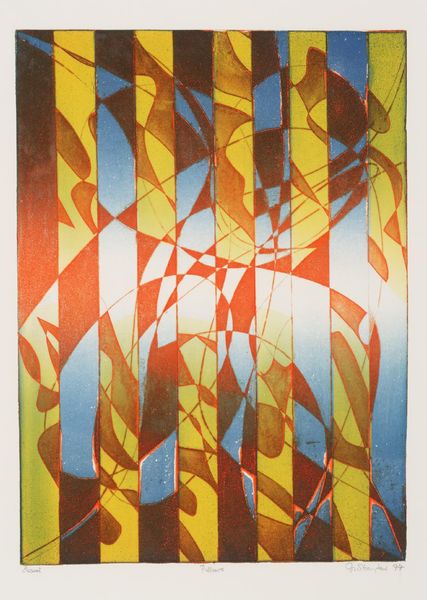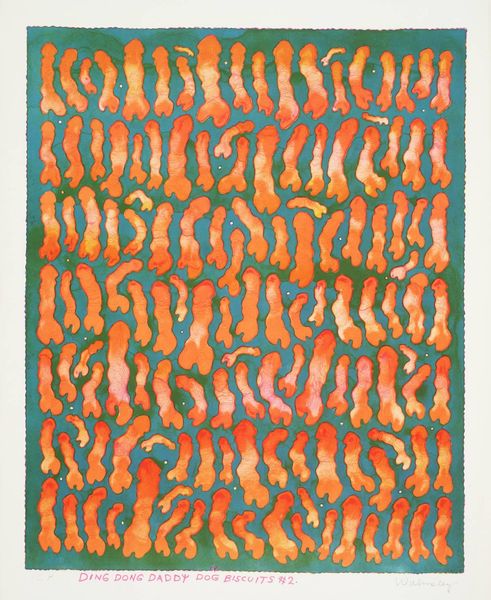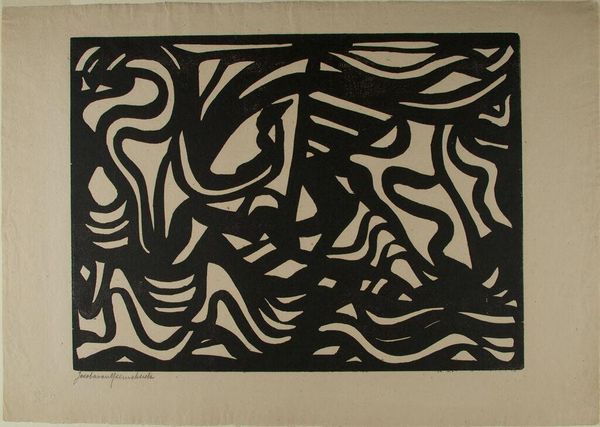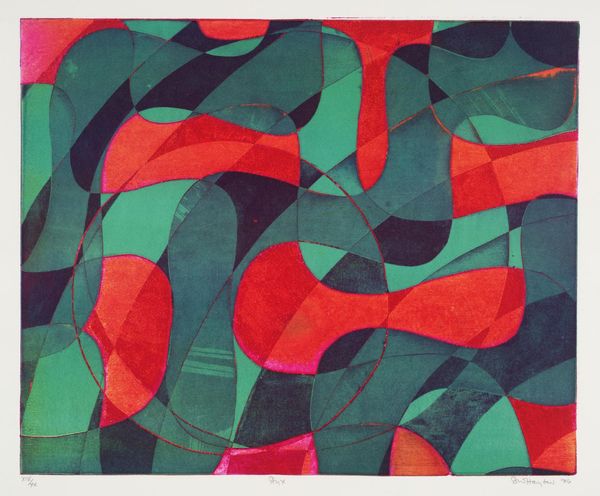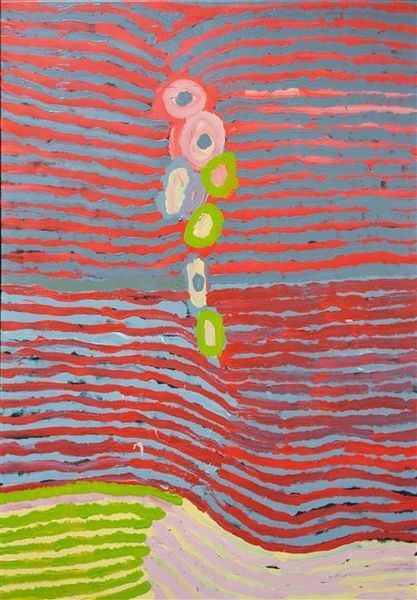
graphic-art, print, linocut
#
abstract-expressionism
#
graphic-art
#
linocut
# print
#
linocut
#
linocut print
#
art-informel
Copyright: Pierre Alechinsky,Fair Use
Editor: Pierre Alechinsky's 1969 linocut print, "Shrimp and Salad," really jumps out with its bold color choices. It feels playful, yet almost unsettling. The squiggly figures framing the central image make it seem almost like a stage. How do you interpret this work? Curator: Considering Alechinsky's involvement with the Art Informel movement, it's essential to view this work as a challenge to established artistic conventions. These unconventional techniques questioned what constituted "high art," pushing printmaking outside of academic definitions and into an artistic language focused on immediacy, challenging viewers' perceptions and prompting them to consider art beyond its aesthetic value. It also is hard to divorce this playful but “unsettling” mood from the global unease in the late 1960s when it was made. Do you agree that societal contexts often find their way into art? Editor: Definitely. The border feels very organic, as if those creatures might crawl right off the page. And placing what should be quite ordinary food within that strange border makes the everyday surreal. How would "Shrimp and Salad" have been viewed back when it was created? Curator: It's interesting to consider the shift in how audiences perceive art over time. Initially, works like Alechinsky's, part of the broader Art Informel, were a rather avant-garde break from more rigid art movements, with an approach focused more on gestural and immediate artistic interventions, questioning ideas around formalism and careful compositional planning. As society becomes more accustomed to diverse styles, the challenging nature becomes a historical marker of that transformative period, impacting future artistic developments and allowing the public and institutions to engage more critically. It encouraged them to reflect on not just art, but its public role. Editor: That’s a perspective shift I hadn’t fully considered – art as a challenge to public values. Thinking about the museum’s role in shaping taste definitely sheds new light on Alechinsky's intentions here. Curator: Exactly. And art is nothing if not a product of–and a response to–the social and cultural forces that surround it.
Comments
No comments
Be the first to comment and join the conversation on the ultimate creative platform.
